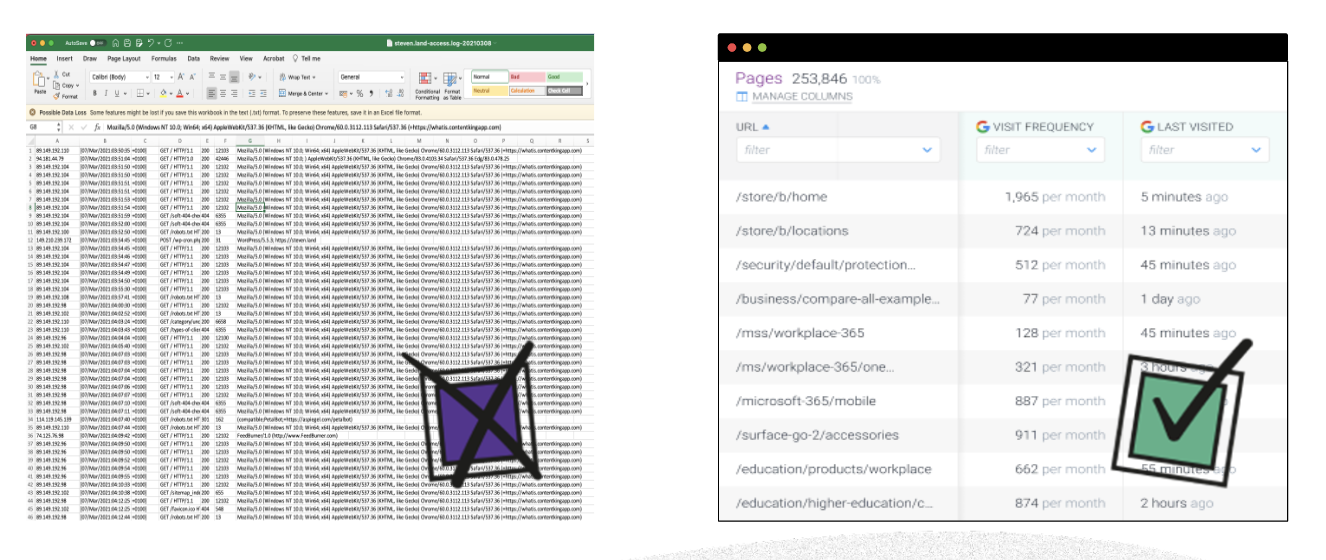Wish you knew the secrets to getting your written content seen and ranked faster?
Want to know what’s slowing it all down?
We can help you understand how your content gets noticed and crawled by Google so you can create naturally higher-ranking pages, blogs, and more.
Once you understand how Google sees your content, you can quickly determine how to get it live on the SERPs faster.
Real-time log file insights can become your secret ingredient to better content and SEO.
On May 18, I moderated a webinar by Steven Van Vessum, Director of Organic Marketing at ContentKing/Conductor.
He showed how you can easily use log file insights to improve crawling and indexing, leading to higher-ranked content.
Here is a summary of the webinar.
To access the entire presentation, complete the form.
How To Get Crawled & Ranked Faster
There’s a good chance that you’re facing these issues, as most companies do:
- Considerable delays in crawling and indexing.
- Churning out X number of content pieces a month.
- Inability to explain search engine behavior.
- Lack of leverage on data sources.
[Overcome these issues with our key insights] Instantly access this webinar →
Tip #1: Make Sure Your Content Has Great Discoverability.
Make life easy for search engines by:
- Updating your XML sitemaps.
- Providing relevant internal links.
- Promoting content successfully.
Tip #2: Prevent Roadblocks.
Avoid these roadblocks for search engines that try to crawl your site:
- Canonical tag issues.
- Robots directive issues.
- Robots.txt issues.
Tip #3: Get Relevant & Authoritative Backlinks.
To get content crawled, indexed, and ranked fast, find a way to obtain relevant and authoritative backlinks.
This will jumpstart the success of your content.
[Learn tips for building these backlinks] Instantly access this webinar →
Tip #4: Leverage Log Files.
What are log files?
They are text files containing records of:
- All the requests a server has received from both humans and crawlers.
- Your site’s responses to these requests.
They show crawlers’ actual behavior and are essential in understanding how they crawl your site.
[Find out what other gems are included in log files] Instantly access the webinar →
Companies need easy access to log file insights for content teams to succeed.
When you have those insights, you can start thinking critically and getting answers to questions like:
- Has Google crawled these new pages yet?
- Has Google refreshed the pages you updated?
- Has Google tried crawling pages while they had issues?
- How often do your pages get recrawled, on average?
Level Up Your SEO With Log Files
Log files traditionally are:
- Inefficient and time-consuming.
- Traditionally stored in silos as excel sheets, which makes insights hard to reach.
- Often only examined once a year.
[Discover how often you should be checking log files] Instantly access the webinar →
Fortunately, there are easier ways to get a hold of these log files than the traditional method.
The answer is in CDN Logs.
What Are CDN Logs?
CDN Logs are databases that are stored on services like CloudFlare’s CDN, which are basically networks across the globe that have copies of sites.
A lot of these CDN sites keep logs.
These logs are updated in real-time and are often available through a plug-and-play connector.
Connecting these log insights to your content inventory allows you to see data such as how often your newly published posts are crawled.
So, instead of sifting through excel sheets of data, you can quickly view log files this way.
 Old vs. new way of viewing log files, ContentKing, May 2022
Old vs. new way of viewing log files, ContentKing, May 2022Valuable Insights You Get With CDN Logs
When you use CDN logs to improve crawling and indexing, you’ll be able to get data that helps you answer these questions:
New Page CDN Log Insights
- How long does it take for search engines to crawl new pages?
- Can you speed up the time to crawl with improved content promotion or internal linking?
- Is there a correlation between crawl frequency and internal links?
- Can you move away from manually parsing raw logs to automatically extracted insights?
Updated Page CDN Log Insights
- Has Google already picked up your improvements?
- How soon does Google refresh pages after making updates?
- Is there increased crawl activity after making changes?
Robots.txt CDN Log Insights
- Has Google recrawled the new robots.txt directives?
XML Sitemaps CDN Log Insights
- Has Google recrawled my XML sitemap after it was updated?
Tip #5: Leverage Google Search Console.
Once you see the real-time log file insights and notice that the search engines haven’t crawled your newly published pages yet, it’s helpful to check Google Search Console.
This gives Google a nudge.
Make content discovery easy with CDN logs.
Get hold of CDN logs through the biggest four providers.
[Discover the four big providers of CDN logs] Instantly access the webinar →
If you’re using one of them, you’ll be able to get access to these CDN log files and start up-leveling your SEO game.
[Slides] Get Content Crawled & Ranked Faster: 5 Tips From An SEO Expert
Here’s the presentation:
Get Content Crawled & Ranked Faster: 5 Tips From An SEO Expert from Search Engine Journal
Join Us For Our Next Webinar!
Top 5 Ways To Drive Revenue With A Clean Marketing Tech Stack
How many apps have your team added to your site to improve customer experience?
Discover how to wade through the sea of website apps and find the right solutions for your business in our next webinar on June 1, 2 p.m. ET.
Image Credits
Featured Image: Paulo Bobita/Search Engine Journal
